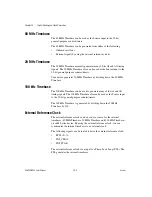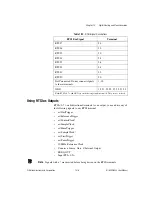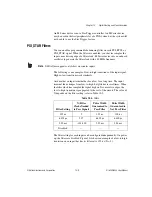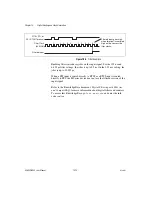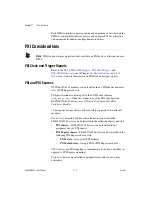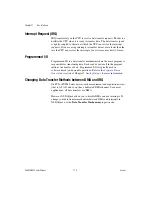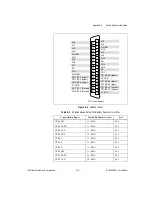
Chapter 10
Digital Routing and Clock Generation
10-8
ni.com
PXI Clock and Trigger Signals
Note
PXI clock and trigger signals are only available on PXI devices. Other devices use
RTSI.
PXI_CLK10
PXI_CLK10 is a common low-skew 10 MHz clock reference clock for
synchronization of multiple modules in a PXI measurement or control
system. The PXI backplane is responsible for generating PXI_CLK10
independently to each peripheral slot in a PXI chassis.
PXI Triggers
A PXI chassis provides eight bused trigger lines to each module in a
system. Triggers may be passed from one module to another, allowing
precisely timed responses to asynchronous external events that are being
monitored or controlled. Triggers can be used to synchronize the operation
of several different PXI peripheral modules.
On M Series devices, the eight PXI trigger signals are synonymous with
RTSI <0..7>.
Note that in a PXI chassis with more than eight slots, the PXI trigger lines
may be divided into multiple independent buses. Refer to the
documentation for your chassis for details.
PXI_STAR Trigger
In a PXI system, the Star Trigger bus implements a dedicated trigger line
between the first peripheral slot (adjacent to the system slot) and the other
peripheral slots. The Star Trigger can be used to synchronize multiple
devices or to share a common trigger signal among devices.
A Star Trigger controller can be installed in this first peripheral slot to
provide trigger signals to other peripheral modules. Systems that do not
require this functionality can install any standard peripheral module in this
first peripheral slot.
An M Series device receives the Star Trigger signal (PXI_STAR) from a
Star Trigger controller. PXI_STAR can be used as an external source for
many AI, AO, and counter signals.









